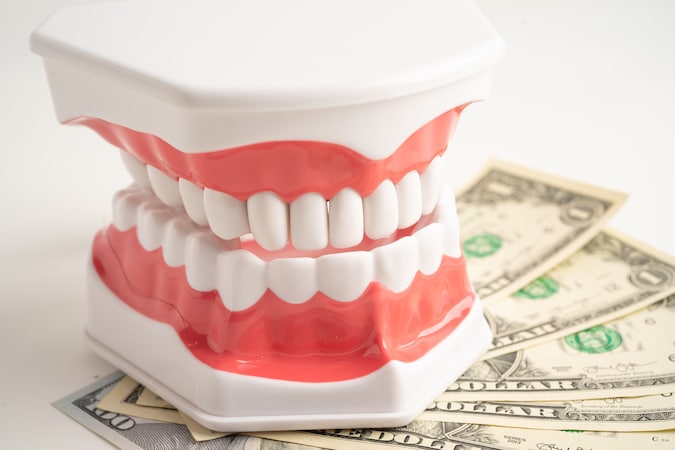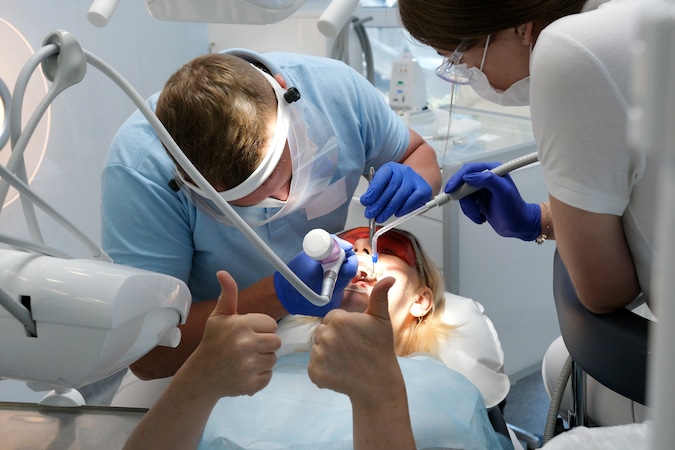
Budgeting for Dental Insurance That Fits Your Finances

If you’re looking for affordable dental insurance that meets your needs, understanding the available plans and budgeting wisely is essential.
Maintaining oral health is crucial, but dental costs can add up quickly. To avoid financial strain, it’s important to select a dental insurance plan that fits both your dental needs and budget. This guide will walk you through choosing the right insurance, understanding the costs, and exploring alternatives that keep your smile healthy without overspending.
Key Takeaways:
- Dental insurance plans vary, with options like PPO, HMO, and dental discount plans available.
- Understanding your dental needs is key to selecting the right plan.
- Budgeting strategies, like Health Savings Accounts (HSAs) and payment plans, can help manage costs.
- Community health centers and dental schools offer affordable alternatives for dental care.
Types of Dental Insurance: Finding the Best Plan for You

Choosing dental insurance can be overwhelming, but breaking it down by plan type will help you find what works for your situation.
Preferred Provider Organization (PPO) Plans
PPO plans are popular due to their flexibility. These plans allow you to visit any dentist, though you’ll pay less if you stay in-network. PPO plans are ideal if you anticipate needing a variety of dental services like cleanings, fillings, or orthodontics.
Health Maintenance Organization (HMO) Plans
HMO dental plans tend to have lower premiums but require you to select a primary dentist. All dental care must be obtained from a dentist within the HMO’s network. This plan is great for those who prioritize preventive care and routine visits.
Dental Indemnity Plans
Dental indemnity plans offer the most flexibility by allowing you to visit any dentist without network restrictions. However, they come with higher premiums and require you to pay for services upfront, submitting claims for reimbursement afterward1. If you value freedom of choice and don’t mind handling claims yourself, this might be the plan for you.
Dental Discount Plans
Dental discount plans are not insurance but offer reduced rates on dental care. You pay a small monthly or annual fee, then receive discounts on services from participating dentists2. This is a good option for people with minimal dental needs who want to lower their overall costs.
Understanding Dental Insurance Costs
Dental insurance plans come with different cost structures, including premiums, deductibles, copayments, and annual maximums. Here’s what you need to know:
- Premiums: This is the monthly or yearly amount you pay for coverage. PPO and indemnity plans usually have higher premiums than HMO plans2.
- Deductibles: The amount you must pay out of pocket before insurance coverage kicks in. Some plans, particularly HMOs, may not have a deductible1.
- Copayments and Coinsurance: The percentage of costs you’re responsible for after meeting the deductible. Typically, preventive care is fully covered, while basic and major services require a higher copayment1.
- Annual Maximums: Most plans cap the amount they will pay for dental services each year. These caps range from $1,000 to $3,000, so it’s important to plan your treatments accordingly.
Assessing Your Dental Needs: A Key Step in Selecting Insurance

Before choosing a dental insurance plan, take a moment to assess your current and future dental needs. Are you primarily looking for preventive care like cleanings and check-ups, or do you anticipate needing more extensive work like fillings, crowns, or orthodontics?
By understanding what treatments you might need, you can better choose a plan that provides the right level of coverage. For example, if you expect to need orthodontic work, it’s important to select a plan that includes orthodontic coverage.
Budgeting Strategies for Dental Insurance
Managing dental care costs can feel daunting, but there are smart ways to budget for insurance and treatments:
Set Up a Dedicated Dental Fund
Consider setting aside a small amount of money each month into a dedicated dental fund. Over time, this will help you cover the cost of premiums, copayments, or any treatments not covered by insurance.
Use Health Savings Accounts (HSAs)
If you have a high-deductible health plan, you may qualify for an HSA. These accounts allow you to save pre-tax money to cover medical and dental expenses, helping reduce your overall costs3.
Explore Payment Plans
Many dental offices offer payment plans for more expensive treatments. This option allows you to spread the cost of procedures like root canals or crowns over several months, easing the financial burden.
Cost-Saving Alternatives for Dental Care
If traditional dental insurance isn’t within your budget, there are still affordable ways to get the care you need.
Community Health Centers
Many community health centers offer dental services on a sliding fee scale based on your income. These centers provide basic dental care at a fraction of the cost3.
Dental Schools
Dental schools offer affordable care as students perform procedures under the supervision of experienced professionals. While appointments may take longer, the savings are significant.
Charitable Clinics
Some clinics operate on a volunteer basis, offering free or low-cost care to those in need. These clinics are often a great resource for emergency or routine dental services.
Final Thoughts
Finding the right dental insurance plan and budgeting for your dental care doesn’t have to be overwhelming. By assessing your dental needs, understanding the various insurance plans, and utilizing cost-saving alternatives, you can maintain a healthy smile without breaking the bank. Remember, investing in preventive care now can save you from more expensive procedures in the future.
Frequently Asked Questions
How do I find out if my insurance covers specific treatments?
Check your insurance plan’s summary of benefits or contact your provider to confirm whether certain procedures, such as crowns or orthodontics, are covered.
What’s the difference between a dental savings plan and insurance?
Dental savings plans provide discounts on dental services, while insurance covers a portion of the costs. Savings plans are generally less expensive but don’t offer the same comprehensive coverage as insurance.
Can I get insurance that covers cosmetic procedures like teeth whitening?
Most dental insurance plans do not cover cosmetic procedures, but some may offer optional cosmetic coverage for an additional fee.
Sources:
- NewMouth. (2023). Dental Insurance Guide. Available at: https://www.newmouth.com/dental-insurance-guide
- Verywell Health. (2024). What You Should Know When Choosing Dental Insurance. Available at: https://www.verywellhealth.com/choosing-dental-insurance
- Bakersfield Smile Design. (2024). Budgeting for Dental Care Without Insurance. Available at: https://www.bakersfieldsmiledesign.com/budgeting-for-dental-care




